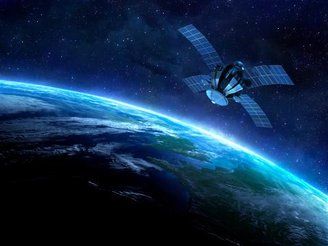Communication is the foundation of human interaction, whether on Earth or in the universe. But we face a unique obstacle in the vastness of space: finite speed of light. This limitation becomes especially apparent when it comes to interstellar travel.
Latest research awaiting peer review, explores the challenges of communicating with spacecraft approaching the speed of lightreveals some alarming truths.
Researchers David Messerschmitt, Ian Morrison, Thomas Mozdzen, and Philip Lubin explore two hypothetical scenarios including: A spacecraft approaching the speed of light.
Although this spacecraft remains in the realm of theory, physics does not rule out its viability. The envisioned spacecraft operated continuously and accelerating at 1G (mimicking Earth’s gravitational pull) will eventually leave all communications from Earth behind.
The relentless speed of light
In the first scenario, as the spacecraft moves away from Earth maintaining constant acceleration, initial communications are possible but delayed due to the travel time of Light. Eventually the ship’s near-light speed makes it impossible to transmit messages to Earth..
Time dilation effect
An interesting development emerges effects of time dilation – a consequence of traveling near the speed of light. Time seems to slow down for those aboard the spacecraft.
While the journey to the center of the galaxy, some 26,000 light-years away, may subjectively take only 20 years, reaching the vantage point of the visible universe could take 45 years.

Regaining communication during a slowdown
The second scenario initiates a deceleration phase as the spacecraft approaches its target. At this stage, messages received from Earth are finally catching up. causing a delayed communication flowbut constantly.
However, as the spacecraft approaches its target, outgoing messages from Earth will begin to accumulate, leading to communications overload as the spacecraft approaches.

The study, available on ARXIV, analyzes Classical and relative effects of communication, but recognizes other factors. For example, signals from a moving ship will be subject to the Doppler effect and will require adaptive antennas that can detect changing light frequencies.
Moreover, relative divergence (the concentration of light in the direction of motion) introduces an additional layer of complexity. The research team also emphasizes the need for interstellar spacecraft and their crews to operate autonomously.
Stay up to date with the latest scientific studies at TecMundo. If you wish, enjoy learning why life in space may be closer than ever.
Source: Tec Mundo
I’m Blaine Morgan, an experienced journalist and writer with over 8 years of experience in the tech industry. My expertise lies in writing about technology news and trends, covering everything from cutting-edge gadgets to emerging software developments. I’ve written for several leading publications including Gadget Onus where I am an author.













